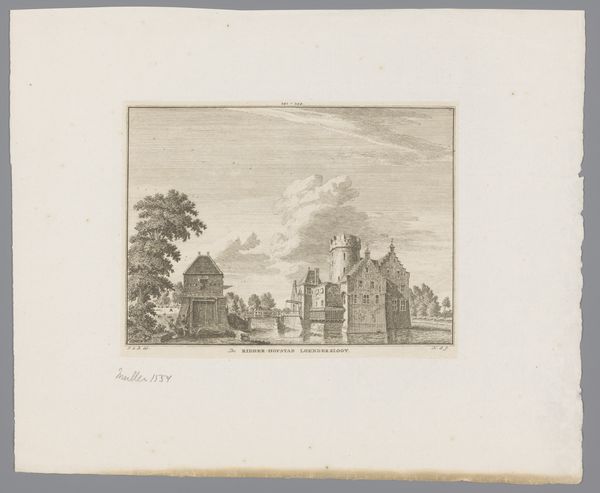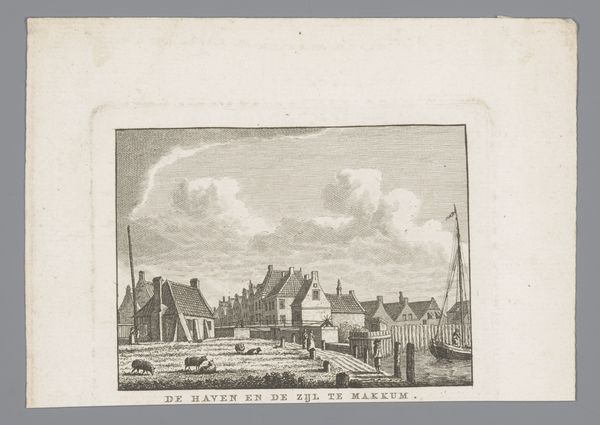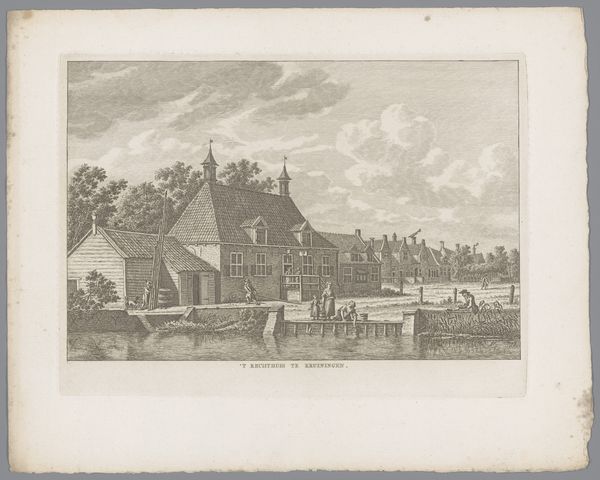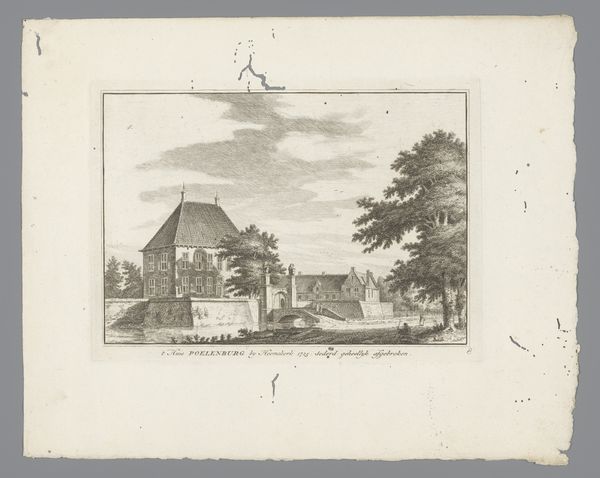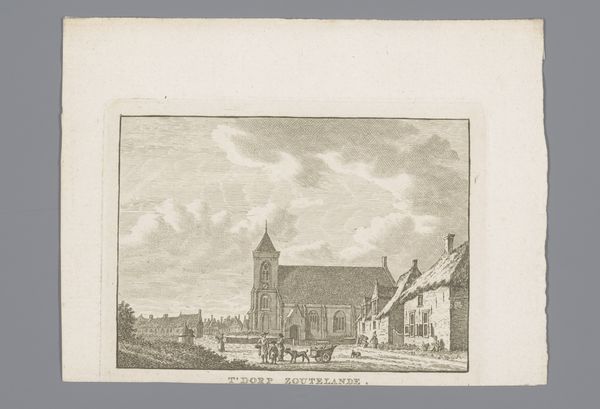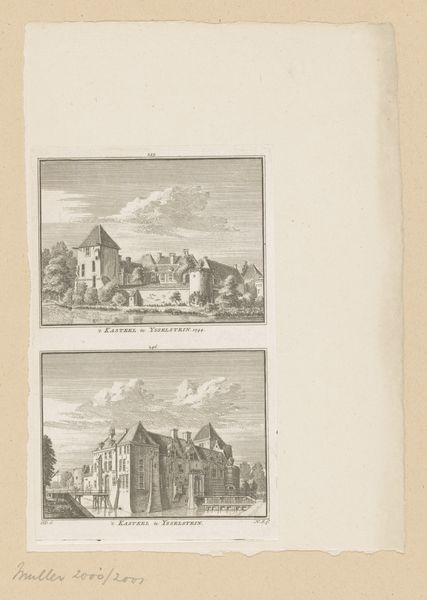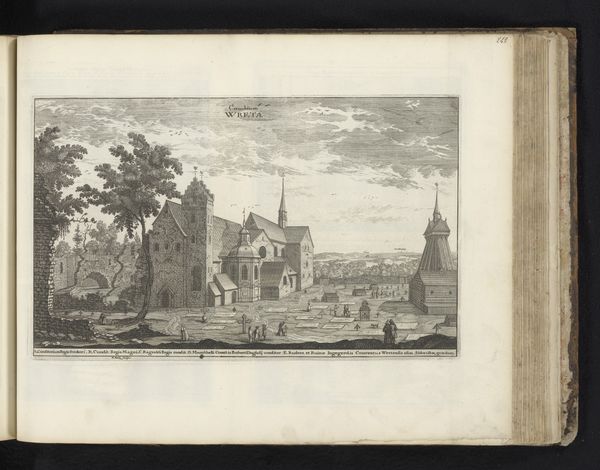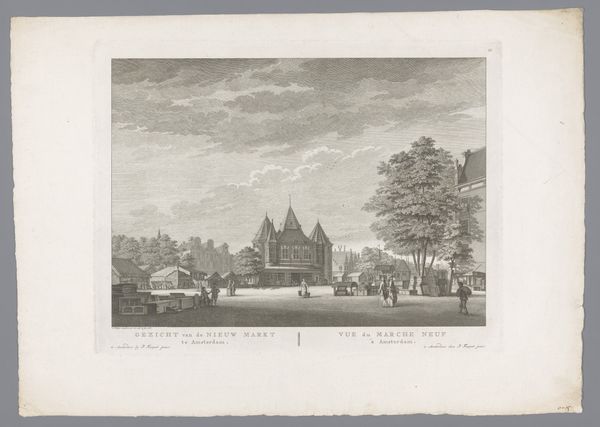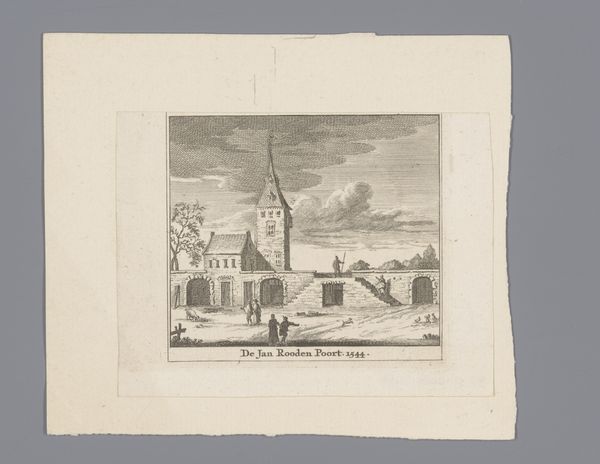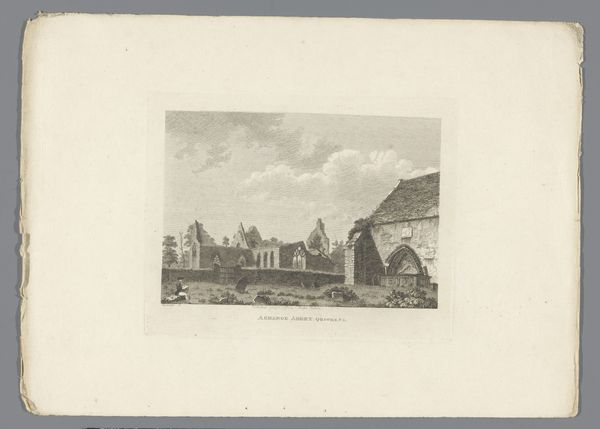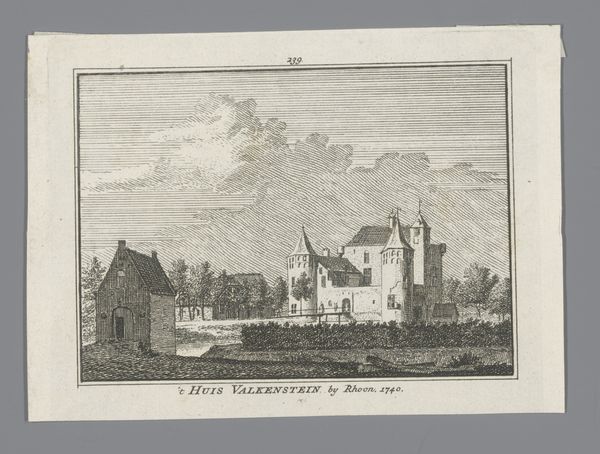
print, engraving
#
neoclacissism
#
dutch-golden-age
# print
#
landscape
#
geometric
#
line
#
cityscape
#
engraving
Dimensions: height 113 mm, width 110 mm
Copyright: Rijks Museum: Open Domain
Editor: Here we have "Gezicht op de Kennemerpoort te Alkmaar" by Carel Frederik Bendorp, created sometime between 1786 and 1792. It's an engraving, and what strikes me is the detailed depiction of everyday life within this cityscape. How do you see this work connecting to the broader context of its time? Curator: That’s a great observation. For me, this image speaks volumes about power, access, and control within Dutch society at the time. While seemingly a simple cityscape, consider who had the resources to commission, create, and consume such images. Who is absent from this supposedly ‘everyday’ scene? Editor: Interesting, I hadn’t thought about it that way. I guess the very act of creating and possessing this image was a signifier of status. Does the architecture itself hold any significance in this regard? Curator: Absolutely. The Kennemerpoort itself was a physical barrier, controlling who and what entered Alkmaar. Note the stark geometric qualities of the structures rendered through a Neoclassical lens that served to uphold civic pride and legitimized power structures. But I would ask you, does this resonate with current urban landscapes? Are there still physical and symbolic barriers in our cities today? Editor: Definitely! Thinking about gated communities, or even the design of public spaces that deter certain populations... Curator: Precisely. This artwork offers us a glimpse into the past but also prompts crucial questions about urban planning and social justice in the present. Considering Bendorp was an engraver, how does this medium further connect or disconnect social narratives and justice? Editor: I never thought I’d see so much more than just a pretty picture. Thank you for this insightful breakdown. Curator: The beauty of art history lies in its ability to reflect the past and illuminate the present, while demanding action for a more equitable future.
Comments
No comments
Be the first to comment and join the conversation on the ultimate creative platform.
